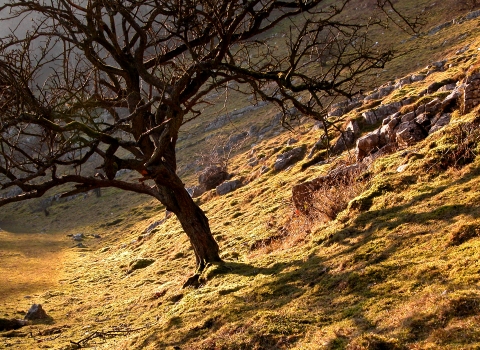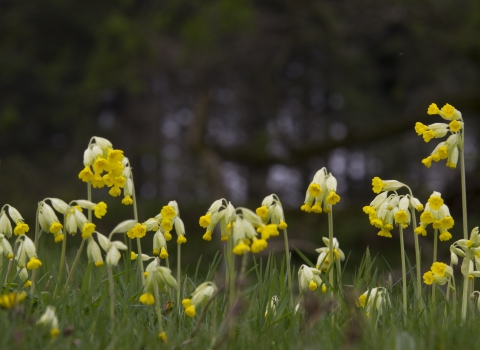
Bluebells - Lara Howe
Mascall's Wood
Know before you go
Dogs
Visit the 'Dog walking on reserves' page in the Contact section for more information.
When to visit
Opening times
Open at all timesBest time to visit
April to JulyAbout the reserve
The wood is predominantly Oak, Ash and Lime and due to the steep slopes and folds in the landscape it is classified as a ravine woodland. You will also find Whitebeam and Yew trees and also a considerable amount of the non-native Turkey Oak which was planted some time in the past. Turkey Oaks are easy to identify as they have hairy acorn cups very different from our native Oaks which have smooth acorn cups.
The ground flora is species-rich with Bluebells, Dog’s Mercury, Wood Anemone and Wood Sedge. There is also a small patch of the nationally rare Purple Gromwell.
During the spring and summer, a range of butterflies can be seen including Marbled White, Brown Argus and Grizzled Skipper. Other notable invertebrates include the Bulin and Large Chrysalis Snails, Great-Green Bush Cricket and the Spurge Bug. At dawn and dusk in spring, summer and autumn Lesser Horseshoe Bats can be seen feeding along the woodland edge.
All year round Green Woodpeckers can be seen feeding on the ant-hills and Ravens and Buzzards are often overhead.
On the lower slopes of the reserve are some overgrown, and more recently acquired, fields once used to grow strawberries. After being abandoned for strawberry growing and becoming overgrown with brambles and scrub, the Trust is now encouraging a flower rich grassland to develop through rotational scrub cutting and grazing.
Reserve conservation management - The woodland is managed through removal of non-native species along with the thinning and coppicing of native tree species. This creates clearings encouraging the growth of understorey plants and the natural regeneration of native tree species. The former strawberry plots contain species-rich grassland and are managed through grazing and rotational scrub clearance.
Mascall's Wood is also close to Cheddar Gorge.



